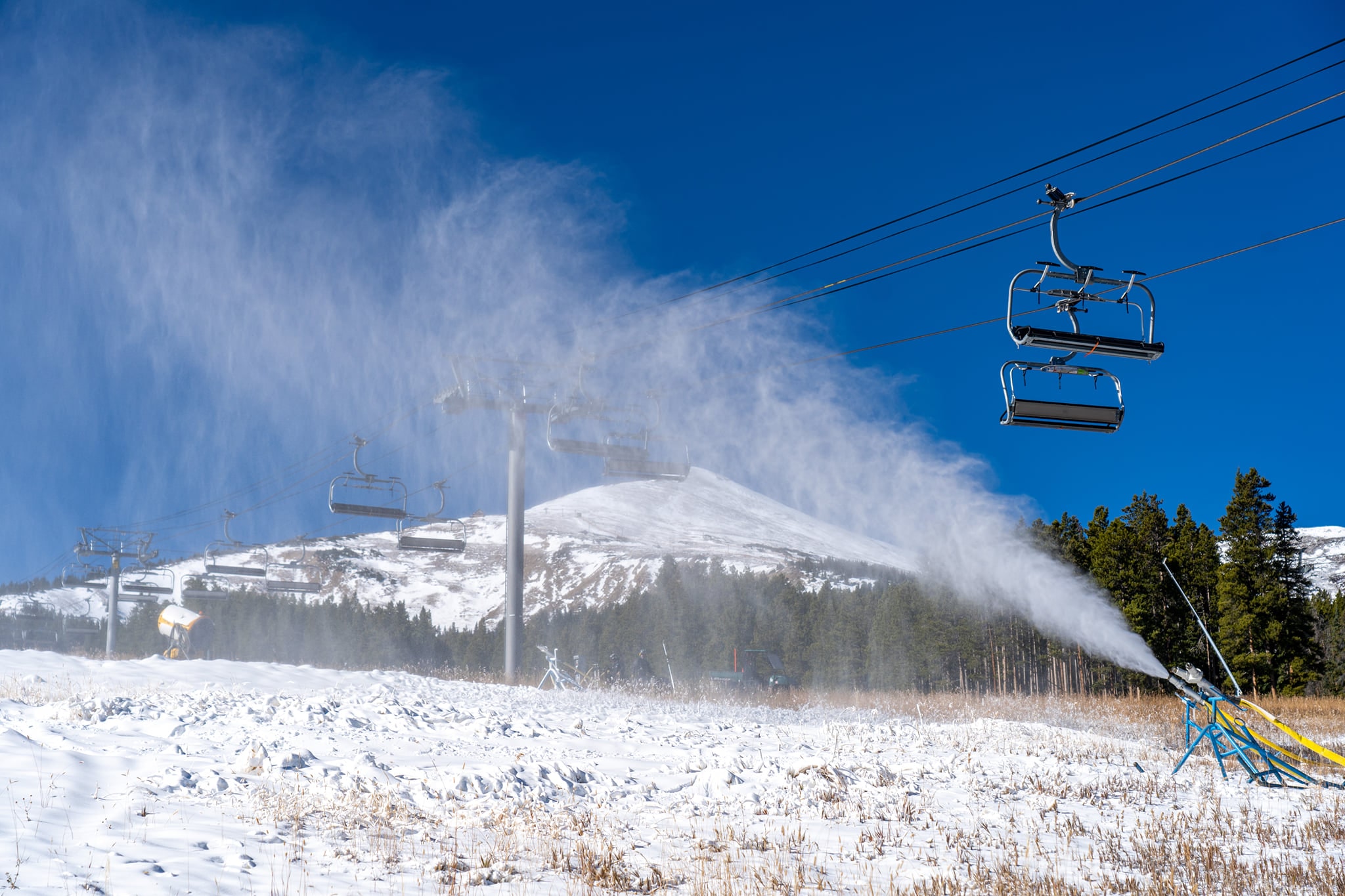
Climate change is the biggest roadblock in the future of the ski industry because warming temperatures mean less snowfall in most regions and more abnormal weather patterns. Many ski resorts are becoming increasingly dependent on artificial snowmaking to combat this. However, a new study reveals that producing snow has many negative consequences.
Published in the Current Issues in Tourism journal, researchers from the University of Waterloo, Canada, and the University of Innsbruck, Austria, conducted the first-ever national study assessing the impacts of snowmaking in Canada. The researchers, Knowles et al., claim that annual snowmaking in Canada alone demands the same energy required to power 17,000 homes.
On average, 130,095 tons of CO2 and 43.4 million cubic meters of water are needed to produce the 42 million cubic meters of artificial snow in Canadian winters. To put that into perspective, it takes 155,000 acres of forest in one year to offset the same amount of carbon.
Snowmaking will be needed more in the coming decades as the effects of climate change manifest themselves more, meaning water and energy requirements will continue to grow to keep the ski season the same length. The study estimates snowmaking requirements will increase between 55% and 97% by 2050.

Skiing and snow sports are vital to Canada’s tourism sector, bringing in $2.51 billion for local and provincial economies. The ski industry also brings an estimated 27,000+ jobs to western Canada, so the health and performance of ski resorts in Canada affect more than ski bums and vacationers.
Although the future does look grim, the team of researchers claims that there are solutions. The researchers advise that resorts should support a systematic approach to ensuring long-term sustainability. This includes investing in energy-efficient snowmaking technologies, promoting water conservation, and supporting the transition to renewable energy sources.
This study isn’t intended to be interpreted as a call to stop artificial snowmaking because snowmaking means that regional skiers don’t have to travel far to get their fix. Snowmaking can help reduce carbon emissions by allowing millions of skiers to ski regionally rather than driving or flying to far-away destinations to find a resort.
As climate change continues to be a bigger threat to the ski industry, resorts and corporations must address the future and begin taking action. As the planet continues to warm, it will be more apparent how essential efficient snowmaking technologies and supporting water preservation will be for the health and longevity of the ski industry. Adaptation to new standards and policies in support of greener snowmaking will shape the future of skiing and riding, making it all the more important for resorts to embrace the change.

I`ve got to say, the above article about snow making, these comments this so called expert is making – “artificial snow” its not artificial, its just man made. If you can`t get even that right, it doesn`t help the credibility of your article!
Indeed, “artificial snow” surfaces are literally made out of synthetic materials and provide sking and riding all year round. They usually require water as a lubricant, but the only carbon emissions associated is in the production process and small amounts of energy for running pumps and lifts. Artificial snow is a great way to get new skiers ⛷️ because the biggest complaint when learning is the cold… lol. There are far more important environmental issues than snow-making… like using high-intensity LEDs for slope lighting that can significantly disturb wildlife, not to mention neighbors. LEDs are also dangerous because glare can blind skiers and riders. High-speed flicker causes strobe-effect that distorts visual perception. Yet, ski areas still use LEDs because they want to save energy. Snow-Bright lighting uses Nikola Tesla’s magnetic induction technology instead of LEDs and are more energy efficient because they have no in-rush current.